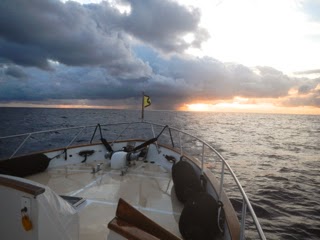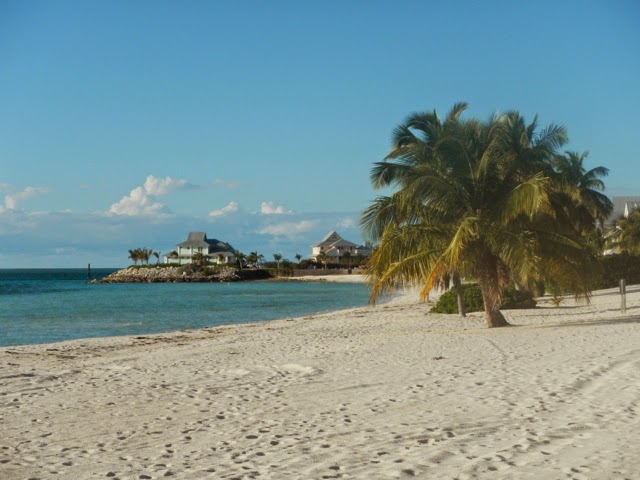We had arranged for a rental car a couple of days earlier. We were meet in Gun Creek and driven back to the rental car yard in Spanish Town, on the flat southern part of Virgin Gorda. From Gun Creek to Spanish Town the road climbs up nearly to the top of Gorda Peak with its 1348 foot summit. Most of the drive is through the Gorda Peak National Park. What tremendous views. As we climbed toward the Peak we could look back down into North Sound with Sir Richard Branson's Necker Island beyond. Just past the Peak we could look across the Sombrero Passage with the Atlantic Ocean to the north and the Caribbean Sea to the South, toward the Leeward Islands. From here we could see several peaks in the distance which probably included Saint Martin with its 411 foot peak, perhaps Saint Barthélemy with its 286 foot peak and further south, Saba with its 514 foot peak and Saint Kitts with its 1156 foot peak. As we descended on the south side of Gorda Peak we could see the southern section of Virgin Gorda. To the west we looked down the length of the Sir Francis Drake Channel, with the British Virgin Islands on either side, and St Johns and the American Virgin Islands at the west end.
Although our car rental would have been worth it just for the fantastic views, our destination today was the Baths. The Baths were created by the Islands volcanic origins which deposited giant granite boulders intermixed with softer material that eroded through the years leaving piles of these boulders on the beach. These piles create tidal pools, tunnels, caves,and arches open to the sea. The Baths can be entered by hiking down trails from the road, as we did, or from the mooring field just off shore. As they won't let you bring dinghies ashore, if you arrive by boat, you must swim to the beach.
The National Park Service has built wood stairs and provided rope hand rails to assist in climbing through a path between and through the tidal pools, tunnels and caves the pile of giant granite boulders provide. Following the path Jackie was greeted again and again by friends she had made on the Ferry ride to Gun Creek. After climbing through the Baths we stopped at the main beach for a swim. Seemed like everyone in the water knew Jackie. She would swim from one to the next as they called her name. She then swam out to a snorkeler who thought, when he saw her approaching underwater through his mask, that he had discovered a strange new sea creature. He had.
We then sat on the beach with the water lapping at our feet, and Jackie between us, soaking in the sun. It felt so good we didn't want to leave.














































